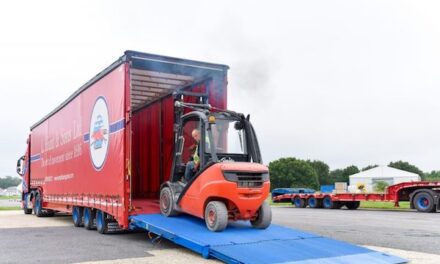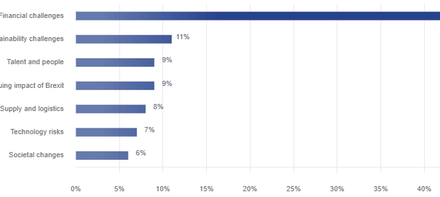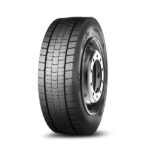Transportation-as-a-service (TaaS) is changing the transportation industry. While third-party logistics providers have offered similar services for years, TaaS offers unique features and benefits that undoubtedly mark a new era in the sector. Adapting to and capitalising on this movement will be crucial for supply chain and transport businesses in the future.
TaaS may be most familiar in the consumer market through companies like Uber and Lyft. However, the business model has expanded into commercial segments, too. As this trend continues, understanding TaaS benefits and features will become increasingly important to staying relevant in the industry. With that in mind, here are five features driving TaaS’s popularity.
1. Pay-as-You-Go Business Models
One of the most significant features and benefits of TaaS is its core business model. These companies have adopted the pay-as-you-go model of software-as-a-service (SaaS) and applied it to transportation, translating into crucial cost benefits for clients.
Businesses relying on TaaS instead of in-house fleets don’t need to pay for maintenance, drivers’ salaries, vehicle acquisition or depreciation. Maintenance savings alone can result in thousands of pounds per year that fleets no longer have to pay. The as-a-service business model also ensures businesses only pay for fleet sizes and types they need, minimising waste.
TaaS business models also provide flexibility. Businesses can increase and decrease fleet sizes or switch to electric vehicles faster and much more affordably than with an in-house fleet. As supply chains focus on adaptability and resiliency, that flexibility becomes an increasingly important advantage.
2. Digital-Native Services
Transportation-as-a-service companies are also digital natives, featuring digital tools and features as core parts of their business model. As more supply chain organisations prioritise digitisation, working with partners with expertise and experience in these technologies is crucial.
TaaS companies typically run on technologies like fleet management software, real-time tracking and cloud services. They have to in order for their business model to be viable. That reliance on these tools makes them more agile and accessible than their more traditional competitors, especially as more organisations seek to implement the same technologies.
As supply chain digitisation increases, businesses must consider the digital capabilities of their partners, not just their internal processes. Working with TaaS companies assures them that their partners are skilled and experienced with these tools, making the shift to digital operations easier.
3. Flexibility in Mobility
Flexibility in mobility options is another key feature and benefit of TaaS. Switching between multiple modes of transportation isn’t practical in a traditional ownership model, limiting passengers or businesses to a few non-specialised options. However, if they use TaaS instead, they can easily switch between methods as it suits their needs.
Having choices between options is particularly important for consumer-facing businesses. Roughly two-thirds of online shoppers have chosen one retailer over another because of more appealing delivery services. Being able to choose between multiple options lets companies extend that choice to their customers, meeting a wider range of needs.
In consumer circles, TaaS lets passengers coordinate car rides, micro-mobility and public transport all from the same service. In commercial markets, it offers choices between various road vehicle types, including electric vehicles (EVs), ships and even air travel. Managing all of that in-house can quickly become expensive and inconvenient, but TaaS makes it possible.
4. Automation
Automation is another key feature of TaaS driving its success. Many TaaS services include automated routing software or platforms that automatically connect ideal drivers to specific jobs. This streamlines operations for TaaS providers and extends that precision and efficiency to their clients.
Before the digital TaaS revolution, managing third-party fleets involved significant transparency issues and inefficiencies. Communication had to filter between two or three stops before both sides could come to a decision. Now that automation has redefined these services, both sides can automatically find ideal arrangements and get updates, enabling faster actions.
TaaS’s reliance on automation also minimises the risks of human error. By preventing mistakes, these services can offer more assurance and factoring price transparency to clients to outcompete more error-prone, less tech-centric competitors.
5. Environmental Sustainability
TaaS benefits and features extend into organisations’ environmental stance and public image. The pay-as-you-go model is often more eco-friendly than traditional fleet operations, as it results in fewer vehicles on the road overall. Clients’ portion of these fleet’s emissions will only reflect actual work-related trips, further reducing their carbon footprints.
The latest government targets to slash emissions by 78% by 2035 include shipping and aviation, which previous goals omitted. Consequently, fleets bear more responsibility than ever in minimising transportation emissions, making sustainability even more critical. Using TaaS to emit only what they need and decrease the total number of vehicles is a significant step in that endeavour.
TaaS also makes it easier to transition to EVs. Some companies may not be able to justify the high upfront costs of these vehicles, but TaaS makes them more accessible by changing ownership and payment models. More businesses and consumers can then switch to zero-emissions transportation.
Transportation-as-a-Service Is the Future
The TaaS model will undoubtedly reshape the transportation sector as a whole. It’s only a question of when not of if.
As needs for cost efficiency, flexibility and sustainability rise, TaaS’s benefits become increasingly difficult to overlook. Transportation companies must either adopt similar features or embrace TaaS partners to capitalise on this movement.
Editor
Emily Newton







